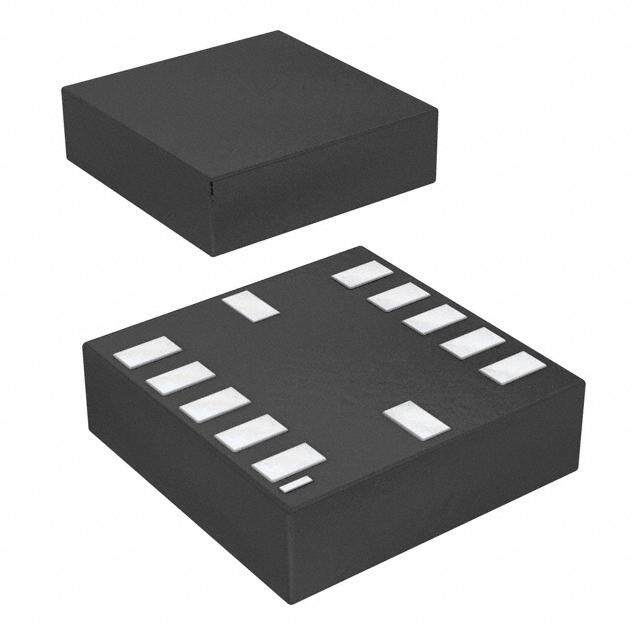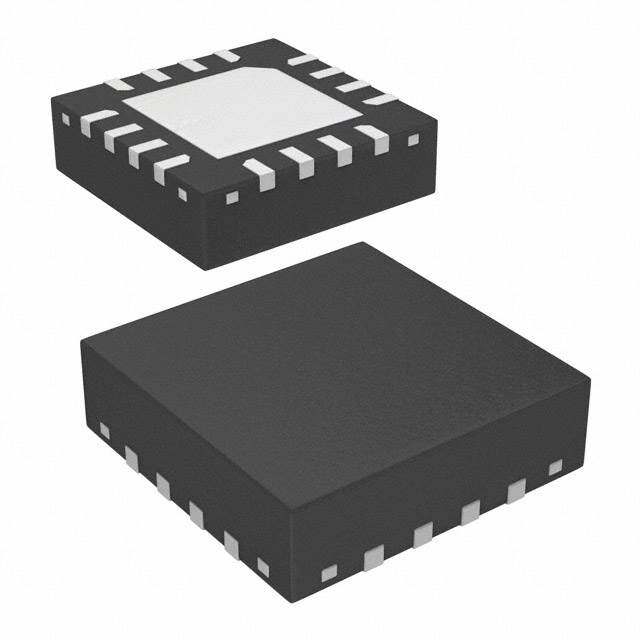ICGOO在线商城 > 传感器,变送器 > 运动传感器 - 陀螺仪 > ADXRS623BBGZ
- 型号: ADXRS623BBGZ
- 制造商: Analog
- 库位|库存: xxxx|xxxx
- 要求:
| 数量阶梯 | 香港交货 | 国内含税 |
| +xxxx | $xxxx | ¥xxxx |
查看当月历史价格
查看今年历史价格
ADXRS623BBGZ产品简介:
ICGOO电子元器件商城为您提供ADXRS623BBGZ由Analog设计生产,在icgoo商城现货销售,并且可以通过原厂、代理商等渠道进行代购。 ADXRS623BBGZ价格参考¥307.64-¥307.64。AnalogADXRS623BBGZ封装/规格:运动传感器 - 陀螺仪, Gyroscope Z (Yaw) ±150 1Hz ~ 3kHz Analog Voltage 32-CBGA (7x7)。您可以下载ADXRS623BBGZ参考资料、Datasheet数据手册功能说明书,资料中有ADXRS623BBGZ 详细功能的应用电路图电压和使用方法及教程。
ADXRS623BBGZ 是由 Analog Devices Inc.(ADI)生产的一款运动传感器,属于陀螺仪类别。该型号是一款高性能、低功耗的角速度传感器(陀螺仪),主要应用场景包括以下几类: 1. 工业自动化与机器人 - 在工业自动化领域,ADXRS623BBGZ 可用于检测机器人关节或机械臂的旋转角度和速度,确保精确的运动控制。 - 适用于需要高精度姿态调整的工业设备,例如无人机、无人驾驶车辆或自动导航小车。 2. 航空航天与导航 - 该陀螺仪可用于惯性导航系统(INS),为飞行器、导弹或卫星提供精确的角速度数据。 - 在飞机的姿态控制系统中,ADXRS623BBGZ 可帮助监测和调整航向、俯仰和横滚角度。 3. 医疗设备 - 在医疗领域,这款陀螺仪可用于康复设备或手术机器人中,以监测患者的运动状态或实现精确的手术操作。 - 还可应用于可穿戴健康设备,如步态分析仪或平衡训练设备。 4. 消费电子 - ADXRS623BBGZ 可用于高端消费电子产品,例如虚拟现实(VR)头盔、增强现实(AR)眼镜或游戏控制器,提供精准的头部或手部动作追踪。 - 在智能玩具或遥控设备中,也可用作姿态感知模块。 5. 汽车电子 - 在汽车电子稳定系统(ESP)、防侧翻系统(RSC)或自动驾驶辅助系统(ADAS)中,ADXRS623BBGZ 可用于监测车辆的倾斜角度和旋转速度。 - 适用于高级驾驶辅助功能,如车道保持、自动泊车等。 6. 振动与稳定性监测 - 该陀螺仪可用于监测桥梁、建筑物或大型结构的振动和稳定性,通过测量微小的角度变化来预测潜在的安全隐患。 - 在地震监测仪器中,也可以作为高灵敏度的角速度检测单元。 总结 ADXRS623BBGZ 的高精度、低漂移特性和宽工作温度范围,使其非常适合对可靠性要求较高的应用场合。无论是工业、航空航天还是消费电子领域,它都能提供稳定的角速度测量,满足多样化的需求。
| 参数 | 数值 |
| 产品目录 | |
| 描述 | IC GYROSCOPE YAW RATE 32CBGA螺旋仪 150 Deg/s Yaw Rate |
| 产品分类 | 陀螺仪运动与定位传感器 |
| 品牌 | Analog Devices Inc |
| 产品手册 | |
| 产品图片 |
|
| rohs | RoHS 合规性豁免无铅 / 不符合限制有害物质指令(RoHS)规范要求 |
| 产品系列 | 螺旋仪,Analog Devices ADXRS623BBGZ- |
| 数据手册 | |
| 产品型号 | ADXRS623BBGZ |
| PCN组件/产地 | |
| 产品种类 | 螺旋仪 |
| 传感轴 | Single |
| 供应商器件封装 | 32-CBGA(7x7) |
| 典型带宽 | 3kHz |
| 加速 | 2000 g |
| 商标 | Analog Devices |
| 宽度 | 7 mm |
| 封装 | Bulk |
| 封装/外壳 | 32-BFCBGA |
| 封装/箱体 | CBGA-32 |
| 工作温度 | -40°C ~ 105°C |
| 工厂包装数量 | 20 |
| 带宽 | 3000 Hz |
| 数字输出-位数 | - |
| 数字输出-总线接口 | - |
| 最大工作温度 | + 105 C |
| 最小工作温度 | - 40 C |
| 标准包装 | 1 |
| 灵敏度 | 12.5mV/°/s |
| 电压-电源 | 4.75 V ~ 5.25 V |
| 电流-电源 | 3.5mA |
| 电源电压-最大 | 5.25 V |
| 电源电压-最小 | 4.75 V |
| 电源电流 | 3.5 mA |
| 系列 | ADXRS623 |
| 范围 | +/- 150 deg/s |
| 范围°/s | ±150°/s |
| 输出类型 | 模拟 |
| 长度 | 7 mm |
| 高度 | 3 mm |

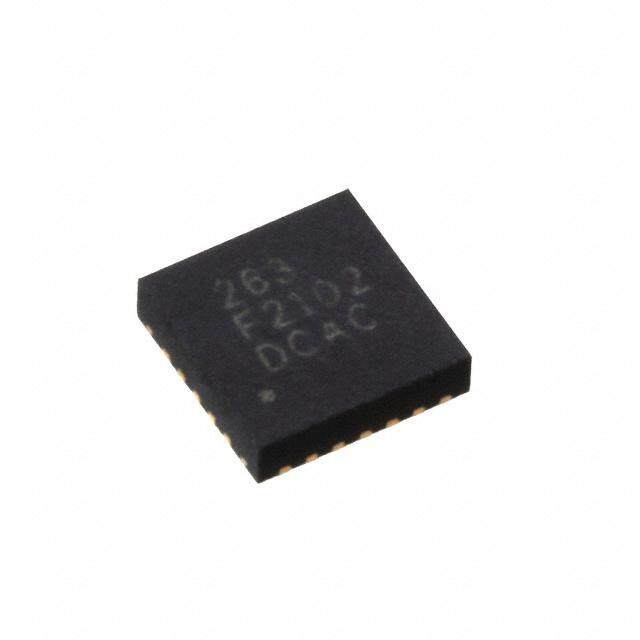
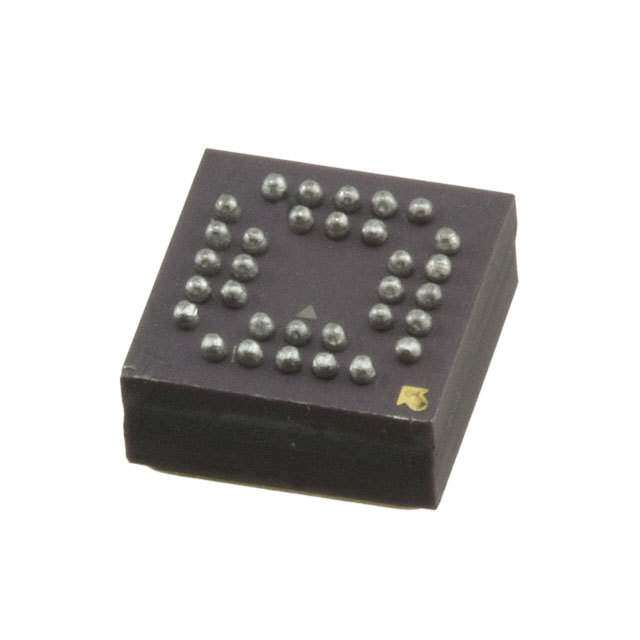



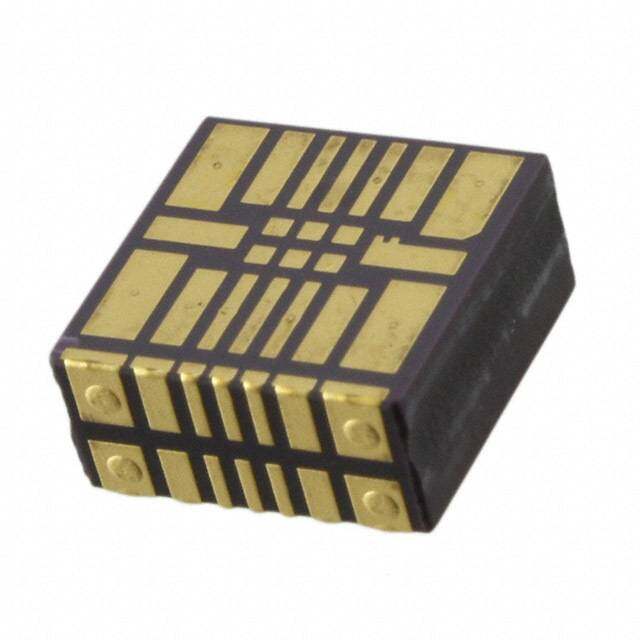



- 商务部:美国ITC正式对集成电路等产品启动337调查
- 曝三星4nm工艺存在良率问题 高通将骁龙8 Gen1或转产台积电
- 太阳诱电将投资9.5亿元在常州建新厂生产MLCC 预计2023年完工
- 英特尔发布欧洲新工厂建设计划 深化IDM 2.0 战略
- 台积电先进制程称霸业界 有大客户加持明年业绩稳了
- 达到5530亿美元!SIA预计今年全球半导体销售额将创下新高
- 英特尔拟将自动驾驶子公司Mobileye上市 估值或超500亿美元
- 三星加码芯片和SET,合并消费电子和移动部门,撤换高东真等 CEO
- 三星电子宣布重大人事变动 还合并消费电子和移动部门
- 海关总署:前11个月进口集成电路产品价值2.52万亿元 增长14.8%

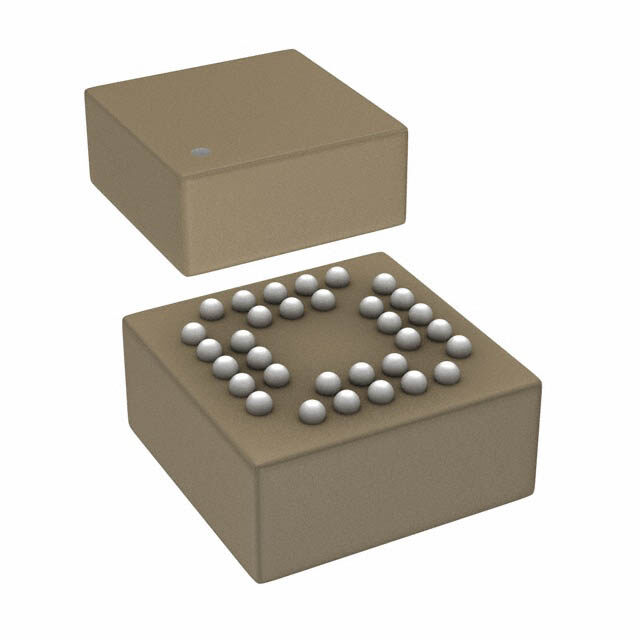


PDF Datasheet 数据手册内容提取
±150°/Sec Yaw Rate Gyroscope ADXRS623 FEATURES GENERAL DESCRIPTION Complete rate gyroscope on a single chip The ADXRS623 is a complete angular rate sensor (gyroscope) Z-axis (yaw rate) response that uses the Analog Devices, Inc., surface-micromachining High vibration rejection over wide frequency process to create a functionally complete and low cost angular 2000 g powered shock survivability rate sensor integrated with all required electronics on one chip. Ratiometric to referenced supply The manufacturing technique for this device is the same high 5 V single-supply operation volume BiMOS process used for high reliability automotive –40°C to +105°C operation airbag accelerometers. Self-test on digital command Ultrasmall and light (<0.15 cc, <0.5 gram) The output signal, RATEOUT (1B, 2A), is a voltage proportional Temperature sensor output to the angular rate about the axis that is normal to the top surface RoHS compliant of the package. The output is ratiometric with respect to a pro- Qualified for automotive applications vided reference supply. An external capacitor sets the bandwidth. Other external capacitors are required for operation. APPLICATIONS Inertial measurement units A temperature output is provided for compensation techniques. Platform stabilization Two digital self-test inputs electromechanically excite the sensor to Robotics test proper operation of both the sensor and the signal conditioning circuits. The ADXRS623 is available in a 7 mm × 7 mm × 3 mm ceramic ball grid array (CBGA) package. FUNCTIONAL BLOCK DIAGRAM +5V (ADC REF) 100nF +5V AVCC ST2 ST1 TEMP VRATIO ADXRS623 100nF SELF-TEST 25kΩ 25kΩ @ 25°C AGND DEMOD DARMIVPE MESCEHNASNOICRAL AAMCP VGA +5V 180kΩ ± 1% VDD CHARGE PUMP AND VOLTAGE 100nF REGULATOR PGND CP1 CP2 CP3 CP4 CP5 SUMJ RATEOUT 22nF 22nF 100nF COUT 08890-001 Figure 1. Rev. A Information furnished by Analog Devices is believed to be accurate and reliable. However, no responsibility is assumed by Analog Devices for its use, nor for any infringements of patents or other One Technology Way, P.O. Box 9106, Norwood, MA 02062-9106, U.S.A. rights of third parties that may result from its use. Specifications subject to change without notice. No license is granted by implication or otherwise under any patent or patent rights of Analog Devices. Tel: 781.329.4700 www.analog.com Trademarks and registered trademarks are the property of their respective owners. Fax: 781.461.3113 ©2010 Analog Devices, Inc. All rights reserved.
ADXRS623 TABLE OF CONTENTS Features .............................................................................................. 1 Theory of Operation .........................................................................9 Applications ....................................................................................... 1 Setting Bandwidth .........................................................................9 General Description ......................................................................... 1 Temperature Output and Calibration .........................................9 Functional Block Diagram .............................................................. 1 Calibrated Performance ................................................................9 Revision History ............................................................................... 2 ADXRS623 and Supply Ratiometricity ................................... 10 Specifications ..................................................................................... 3 Null Adjustment ......................................................................... 10 Absolute Maximum Ratings ............................................................ 4 Self-Test Function ...................................................................... 10 Rate-Sensitive Axis ....................................................................... 4 Continuous Self-Test .................................................................. 10 ESD Caution .................................................................................. 4 Outline Dimensions ....................................................................... 11 Pin Configuration and Function Descriptions ............................. 5 Ordering Guide .......................................................................... 11 Typical Performance Characteristics ............................................. 6 Automotive Products ................................................................. 11 REVISION HISTORY 11/10—Rev. 0 to Rev. A Change to Features ........................................................................... 1 Change Operating Temperature Range, Table 2 ........................... 4 Added Automotive Products Section........................................... 11 3/10—Revision 0: Initial Version Rev. A | Page 2 of 12
ADXRS623 SPECIFICATIONS All minimum and maximum specifications are guaranteed. Typical specifications are not guaranteed. T = −40°C to +105°C, V = AV = A S CC V = 5 V, V = AV , angular rate = 0°/sec, bandwidth = 80 Hz (C = 0.01 µF), I = 100 µA, ±1 g, unless otherwise noted. DD RATIO CC OUT OUT Table 1. Parameter Test Conditions/Comments Min Typ Max Unit SENSITIVITY (RATIOMETRIC)1 Clockwise rotation is positive output Measurement Range2 Full-scale range over specifications range ±150 °/sec Initial and over Temperature 11.25 12.5 13.75 mV/°/sec Temperature Drift3 ±3 % Nonlinearity Best fit straight line 0.1 % of FS NULL (RATIOMETRIC)1 Null −40°C to +105°C 2.5 V Null Drift over Temperature −40°C to +105°C ±250 mV Linear Acceleration Effect Any axis 0.1 °/sec/g NOISE PERFORMANCE Rate Noise Density T = 25°C 0.04 °/sec/√Hz A FREQUENCY RESPONSE Bandwidth4 1 3000 Hz Sensor Resonant Frequency 14.5 kHz SELF-TEST (RATIOMETRIC)1 ST1 RATEOUT Response ST1 pin from Logic 0 to Logic 1 −500 −1000 mV ST2 RATEOUT Response ST2 pin from Logic 0 to Logic 1 500 1000 mV Logic 1 Input Voltage 0.8 × V V RATIO Logic 0 Input Voltage 0.2 × V V RATIO Input Impedance To common 50 kΩ TEMPERATURE SENSOR (RATIOMETRIC)1 V at 25°C Load = 100 MΩ 2.35 2.5 2.65 V OUT Scale Factor5 At 25°C, V = 5 V 9.1 mV/°C RATIO Load to V 25 kΩ S Load to Common 25 kΩ TURN-ON TIME Power on to ±½°/sec of final 50 ms OUTPUT DRIVE CAPABILITY Current Drive For rated specifications 200 µA Capacitive Load Drive 1000 pF POWER SUPPLY Operating Voltage (V) 4.75 5.00 5.25 V S VRATIO Input 3 V V S Supply Current 3.5 5.0 mA TEMPERATURE RANGE Specified Performance –40 +105 °C 1 Parameter is linearly ratiometric with V . RATIO 2 The maximum range possible, including output swing range, initial offset, sensitivity, offset drift, and sensitivity drift at 5 V supplies. 3 From +25°C to −40°C or from +25°C to +105°C. 4 Adjusted by external capacitor, C . OUT 5 For a change in temperature from 25°C to 26°C. V is ratiometric to V . See the Temperature Output and Calibration section for more details. TEMP RATIO Rev. A | Page 3 of 12
ADXRS623 ABSOLUTE MAXIMUM RATINGS RATE-SENSITIVE AXIS Table 2. Parameter Rating The ADXRS623 is a Z-axis, rate-sensing device (also called a Acceleration (Any Axis, 0.5 ms) yaw rate-sensing device). It produces a positive-going output Unpowered 2000 g voltage for clockwise rotation about the axis normal to the Powered 2000 g package top, that is, clockwise when looking down at the V , AV –0.3 V to +6.0 V package lid. DD CC V AV RATIO CC RATE AXIS RATE OUT Output Short-Circuit Duration Indefinite (Any Pin to Common) VCC = 5V Operating Temperature Range –55°C to +125°C LONGITUDINAL + 4.75V Storage Temperature Range –65°C to +150°C AXIS VRATIO/2 7 Stresses above those listed under the Absolute Maximum RATE IN Ratings may cause permanent damage to the device. This is a A1 1 0.25V satnrye sost rhaetri ncgo nodniltyi;o fnusn acbtioovnea tlh oopseer iantidoinca otef dth ien dtheve iocep earta tthioensea lo r A BLATCERDAL AEXISF G GND 08890-002 Figure 2. RATEOUT Signal Increases with Clockwise Rotation section of this specification is not implied. Exposure to absolute maximum rating conditions for extended periods may affect ESD CAUTION device reliability. Drops onto hard surfaces can cause shocks of >2000 g and can exceed the absolute maximum rating of the device. Exercise care during handling to avoid damage. Rev. A | Page 4 of 12
ADXRS623 PIN CONFIGURATION AND FUNCTION DESCRIPTIONS PGND VDD CP5 CP3 CP4 7 6 ST1 CP1 5 ST2 CP2 4 TEMP AVCC 3 2 1 AGND RATEOUT VRATIO NC SUMJ NC = NO COGNNECFT E D C B A 08890-003 Figure 3. Pin Configuration Table 3. Pin Function Descriptions Pin No. Mnemonic Description 6D, 7D CP5 HV Filter Capacitor (100 nF). 6A, 7B CP4 Charge Pump Capacitor (22 nF). 6C, 7C CP3 Charge Pump Capacitor (22 nF). 5A, 5B CP1 Charge Pump Capacitor (22 nF). 4A, 4B CP2 Charge Pump Capacitor (22 nF). 3A, 3B AV Positive Analog Supply. CC 1B, 2A RATEOUT Rate Signal Output. 1C, 2C SUMJ Output Amplifier Summing Junction. 1D, 2D NC No Connect. 1E, 2E V Reference Supply for Ratiometric Output. RATIO 1F, 2G AGND Analog Supply Return. 3F, 3G TEMP Temperature Voltage Output. 4F, 4G ST2 Self-Test for Sensor 2. 5F, 5G ST1 Self-Test for Sensor 1. 6G, 7F PGND Charge Pump Supply Return. 6E, 7E V Positive Charge Pump Supply. DD Rev. A | Page 5 of 12
ADXRS623 TYPICAL PERFORMANCE CHARACTERISTICS N > 1000 for all typical performance plots, unless otherwise noted. 25 30 25 %) 20 %) N ( N ( O O TI TI 20 A A L 15 L U U P P PO PO 15 F F T O 10 T O EN EN 10 C C R R E E P 5 P 5 02.0 2.1 2.2 2.3 2R.4ATE2O.5UT (2V.)6 2.7 2.8 2.9 3.0 08890-004 0−10 −8 −6 −4PER−C2ENT0 DRIFT2 (%) 4 6 8 10 08890-007 Figure 4. Null Output at 25°C (V = 5 V) Figure 7. Sensitivity Drift over Temperature RATIO 45 45 40 40 N (%) 35 N (%) 35 O O ATI 30 ATI 30 OPUL 25 OPUL 25 OF P 20 OF P 20 CENT 15 CENT 15 R R PE 10 PE 10 5 5 0–0.5 –0.4 –0.3 –0.2 –0.1(°/s0/°C) 0.1 0.2 0.3 0.4 0.5 08890-005 0 –500 –600 –700 –800 –900 –1000 –1100 –1200 –1300 –140008890-008 ST1 Δ (mV) Figure 5. Null Drift over Temperature (V = 5 V) Figure 8. ST1 Output Change at 25°C (V = 5 V) RATIO RATIO 35 45 40 30 %) %) 35 ON ( 25 ON ( TI TI 30 A A L L PU 20 PU 25 O O P P OF 15 OF 20 T T EN EN 15 C 10 C R R PE PE 10 5 5 0 11.00 11.25 11.50 11.75 S12.00ENS12.25ITIVI12.50TY (m12.75V/°/13.00s) 13.25 13.50 13.75 14.00 08890-006 0 500 600 700 800 ST9002 Δ (m1000V) 1100 1200 1300 140008890-009 Figure 6. Sensitivity at 25°C (V = 5 V) Figure 9. ST2 Output Change at 25°C (V = 5 V) RATIO RATIO Rev. A | Page 6 of 12
ADXRS623 30 40 35 25 %) %) N ( N ( 30 O O TI 20 TI A A 25 L L U U P P PO 15 PO 20 F F O O T T 15 EN 10 EN C C R R 10 E E P P 5 5 0 0 125 135 1M45EASU1R5E5MEN1T6 R5ANG1E7 5(°/s) 185 195 08890-010 2.40 2.42 2.44 2.46 2.V48OLT2.A5G0E 2(V.5)2 2.54 2.56 2.58 2.60 08890-013 Figure 10. Measurement Range Figure 13. V Output at 25°C (V = 5 V) TEMP RATIO 1.5 3.3 3.1 1.0 2.9 ST2 0.5 2.7 V) V) E ( E ( 2.5 G G A 0 A LT LT 2.3 O O V V −0.5 2.1 ST1 1.9 −1.0 1.7 256 PARTS −1.5−40 −20 0 T2E0MPERA40TURE (6°0C) 80 100 120 08890-011 1.5–40 –20 0 T2E0MPERA40TURE (6°0C) 80 100 120 08890-014 Figure 11. Typical Self-Test Change over Temperature Figure 14. V Output over Temperature (V = 5 V) TEMP RATIO 30 60 REF 50 Y 25 X %) +45° N ( 40 –45° O TI 20 LA 30 T OF POPU 15 (g OR °/s) 1200 EN 10 C ER 0 P 5 –10 02.5 2.7 2.9CU3R.1REN3T. 3CON3S.5UMP3T.7ION 3(.m9A)4.1 4.3 4.5 08890-012 –20750 770 790TIME (ms)810 830 850 08890-015 Figure 12. Current Consumption at 25°C (V = 5 V) Figure 15. g and g × g Sensitivity for a 50 g, 10 ms Pulse RATIO Rev. A | Page 7 of 12
ADXRS623 2.0 0.10 LATITUDE 1.8 LONGITUDE RATE 1.6 0.05 s) 1.4 UT (°/ 1.2 ATEO 1.0 (°/s) 0 R K 0.8 A E P 0.6 –0.05 0.4 0.2 0100 FREQUE1NkCY (Hz) 10k 08890-016 –0.100 20 40 T6IM0E (Hou8r0s) 100 120 140 08890-019 Figure 16. Typical Response to 10 g Sinusoidal Vibration Figure 19. Typical Shift in 90 Sec Null Averages Accumulated (Sensor Bandwidth = 2 kHz) over 140 Hours 400 0.10 300 DUT1 OFFSET BY +200°/s 200 0.05 100 (°/s) 0 (°/s) 0 –100 DUT2 OFFSET BY –200°/s –200 –0.05 –300 –4000 50 100 (ms) 150 200 250 08890-017 –0.100 600 1200TIME 1(S8e0c0onds)2400 3000 3600 08890-020 Figure 17. Typical High g (2500 g) Shock Response Figure 20. Typical Shift in Short-Term Null (Bandwidth = 1 Hz) (Sensor Bandwidth = 40 Hz) 1 0.1 0.1 0.01 s) s rms) Hz rm (°/ (°/s/ 0.01 0.001 0.0010.01 0.1 1AVERAG10E TIME 1(0S0econds1)k 10k 100k 08890-018 0.000110 100 FREQUE1NkCY (Hz) 10k 100k 08890-021 Figure 18. Typical Root Allan Deviation at 25°C vs. Averaging Time Figure 21. Typical Noise Spectral Density (Bandwidth = 40 Hz) Rev. A | Page 8 of 12
ADXRS623 THEORY OF OPERATION The ADXRS623 operates on the principle of a resonator Figure 22 shows the effect of adding a 250 Hz filter to the gyroscope. Two polysilicon sensing structures each contain a output of an ADXRS623 set to 40 Hz bandwidth (as shown dither frame that is electrostatically driven to resonance, in Figure 21). High frequency demodulation artifacts are producing the necessary velocity element to produce a Coriolis attenuated by approximately 18 dB. force while rotating. At two of the outer extremes of each frame, 0.1 orthogonal to the dither motion, are movable fingers that are placed between fixed pickoff fingers to form a capacitive pickoff structure that senses Coriolis motion. The resulting signal is fed 0.01 to a series of gain and demodulation stages that produce the electrical rate signal output. The dual-sensor design rejects ms) 0.001 external g forces and vibration. Fabricating the sensor with Hz r signal conditioning electronics preserves signal integrity in s/ noisy environments. (°/0.0001 The electrostatic resonator requires 18 V to 20 V for operation. 0.00001 Because only 5 V are typically available in most applications, a charge pump is included on chip. If an external 18 V to 20 V 0.000001 sbuep opmlyi titse adv, aainladb lteh,i sth seu ptwpoly ccaapna cbiet ocrosn onne cCtePd1 ttoh rtohue gChP C5P p4in c an 10 100 FREQUE1NkCY (Hz) 10k 100k 08890-022 (6D, 7D). Note that CP5 should not be grounded when power is Figure 22. Noise Spectral Density with Additional 250 Hz Filter applied to the ADXRS623. Although no damage occurs, under TEMPERATURE OUTPUT AND CALIBRATION certain conditions, the charge pump may fail to start up after the ground is removed without first removing power from the It is common practice to temperature-calibrate gyroscopes to ADXRS623. improve their overall accuracy. The ADXRS623 has a tempera- ture proportional voltage output that provides input to such a SETTING BANDWIDTH calibration method. The temperature sensor structure is shown External Capacitor C is used in combination with the in Figure 23. The temperature output is characteristically OUT on-chip R resistor to create a low-pass filter to limit the nonlinear, and any load resistance connected to the TEMP OUT bandwidth of the ADXRS623 rate response. The –3 dB output results in decreasing the TEMP output and temperature frequency set by R and C is coefficient. Therefore, buffering the output is recommended. OUT OUT f =( 1 ) The voltage at the TEMP pin (3F, 3G) is nominally 2.5 V at OUT 2×π×R ×C 25°C and V = 5 V. The temperature coefficient is ~9 mV/°C OUT OUT RATIO at 25°C. Although the TEMP output is highly repeatable, it has and can be well controlled because R is trimmed during OUT only modest absolute accuracy. manufacturing to be 180 kΩ ± 1%. Any external resistor applied between the RATEOUT pin (1B, 2A) and the SUMJ pin (1C, VTEMP 2C) results in VRATIO ROUT = ((118800kkΩΩ×+RREXT)) Figure 23. ADRXFRIXSE6D23 TemRpTeErMaPture Sensor S08890-023t ructure EXT In general, an additional hardware or software filter is added to CALIBRATED PERFORMANCE attenuate high frequency noise arising from demodulation Using a three-point calibration technique, it is possible to spikes at the gyroscope’s 14 kHz resonant frequency (the noise calibrate the null and sensitivity drift of the ADXRS623 to an spikes at 14 kHz can be clearly seen in the power spectral overall accuracy of nearly 200°/hour. An overall accuracy of density curve shown in Figure 21). Typically, the corner 40°/hour or better is possible using more points. frequency of this additional filter is set to greater than 5× the required bandwidth to preserve good phase response. Limiting the bandwidth of the device reduces the flat-band noise during the calibration process, improving the measure- ment accuracy at each calibration point. Rev. A | Page 9 of 12
ADXRS623 ADXRS623 AND SUPPLY RATIOMETRICITY SELF-TEST FUNCTION The ADXRS623 RATEOUT and TEMP signals are ratiometric The ADXRS623 includes a self-test feature that actuates each of to the V voltage; that is, the null voltage, rate sensitivity, and the sensing structures and associated electronics as if subjected RATIO to angular rate. It is activated by standard logic high levels temperature outputs are proportional to V . Thus, the RATIO applied to Input ST1 (5F, 5G), Input ST2 (4F, 4G), or both. ST1 ADXRS623 is most easily used with a supply-ratiometric ADC causes the voltage at RATEOUT to change about −1.0 V, and that results in self-cancellation of errors due to minor supply ST2 causes an opposite change of +1.0 V. The self-test response variations. There is some small error due to nonratiometric follows the viscosity temperature dependence of the package behavior. Typical ratiometricity error for null, sensitivity, self- atmosphere, approximately 0.25%/°C. test, and temperature output is outlined in Table 4. Activating both ST1 and ST2 simultaneously is not damaging. Note that V must never be greater than AV . RATIO CC ST1 and ST2 are fairly closely matched (±5%), but actuating Table 4. Ratiometricity Error for Various Parameters both simultaneously may result in a small apparent null bias Parameter V = V = 4.85 V V = V = 5.15 V shift proportional to the degree of self-test mismatch. S RATIO S RATIO ST1 ST1 and ST2 are activated by applying a voltage of greater than Mean 0.3% 0.09% 0.8 × V to the ST1 and ST2 pins. ST1 and ST2 are deacti- RATIO Sigma 0.21% 0.19% vated by applying a voltage of less than 0.2 × V to the ST1 RATIO ST2 and ST2 pins. The voltage applied to ST1 and ST2 must never Mean −0.15% −0.2% be greater than AV . CC Sigma 0.22% 0.2% Null CONTINUOUS SELF-TEST Mean −0.3% −0.05% The one-chip integration of the ADXRS623 gives it higher Sigma 0.2% 0.08% reliability than is obtainable with any other high volume Sensitivity manufacturing method. In addition, it is manufactured under Mean 0.003% −0.25% a mature BiMOS process with field-proven reliability. As an Sigma 0.06% 0.06% additional failure detection measure, a power-on self-test can be V performed. However, some applications may warrant continuous TEMP Mean −0.2% −0.04% self-test while sensing rate. Details about continuous self-test Sigma 0.05% 0.06% techniques are available in the AN-768 Application Note, Using the ADXRS150/ADXRS300 in Continuous Self-Test Mode, avail- NULL ADJUSTMENT able at www.analog.com. The nominal 2.5 V null is for a symmetrical swing range at RATEOUT (1B, 2A). However, a nonsymmetrical output swing may be suitable in some applications. Null adjustment is possible by injecting a suitable current to SUMJ (1C, 2C). Note that supply disturbances may reflect some null instability. Digital supply noise should be avoided, particularly in this case. Rev. A | Page 10 of 12
ADXRS623 OUTLINE DIMENSIONS 7.05 A1BALL 6.85SQ *IAN1DCEOXRANREERA CORNER 6.70 7 6 5 4 3 2 1 A B 4.80 BSCSQ C 0.80 D BSC E F G TOPVIEW BOTTOMVIEW DETAILA 3.80MAX DETAILA 3.20MAX 0.60MAX 2.50MIN 0.25MIN 0.60 COPLANARITY SEATING 0.55 0.15 PLANE 0.50 *BTAOLTLHAE1DID/AEPNATDIFIIENRTEISRNGAOLLLDYPVLIAATHEODBLAEANSLD.LCDOIANMNEETCETRED 10-26-2009-B Figure 24. 32-Lead Ceramic Ball Grid Array [CBGA] (BG-32-3) Dimensions shown in millimeters ORDERING GUIDE Model1, 2 Temperature Range Package Description Package Option ADXRS623BBGZ –40°C to +105°C 32-Lead Ceramic Ball Grid Array (CBGA) BG-32-3 ADXRS623BBGZ-RL –40°C to +105°C 32-Lead Ceramic Ball Grid Array (CBGA) BG-32-3 ADXRS623WBBGZ –40°C to +105°C 32-Lead Ceramic Ball Grid Array (CBGA) BG-32-3 ADXRS623WBBGZ-RL –40°C to +105°C 32-Lead Ceramic Ball Grid Array (CBGA) BG-32-3 EVAL-ADXRS623Z Evaluation Board 1 Z = RoHS Compliant Part. 2 W = Qualified for Automotive Applications. AUTOMOTIVE PRODUCTS The ADXRS623W models are available with controlled manufacturing to support the quality and reliability requirements of automotive applications. Note that these automotive models may have specifications that differ from the commercial models; therefore, designers should review the Specifications section of this data sheet carefully. Only the automotive grade products shown are available for use in automotive applications. Contact your local Analog Devices account representative for specific product ordering information and to obtain the specific Automotive Reliability reports for these models. Rev. A | Page 11 of 12
ADXRS623 NOTES ©2010 Analog Devices, Inc. All rights reserved. Trademarks and registered trademarks are the property of their respective owners. D08890-0-11/10(A) Rev. A | Page 12 of 12
Mouser Electronics Authorized Distributor Click to View Pricing, Inventory, Delivery & Lifecycle Information: A nalog Devices Inc.: ADXRS623BBGZ ADXRS623BBGZ-RL
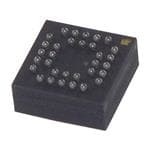
 Datasheet下载
Datasheet下载

